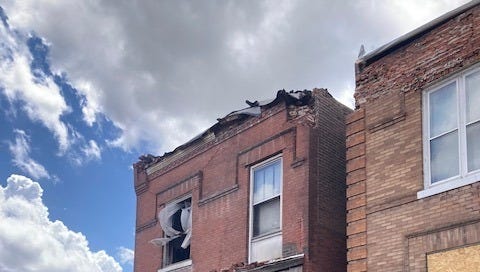If ever you need a reminder that life is not fair, head over to the Fountain Park in north St. Louis and make your way to the corner of Page and Walton Avenues.
This neighborhood of mostly single family homes is among those devastated by the storms (and at least one confirmed tornado) of May 16, 2025.
For context, the region we call “north city” or “north St. Louis” is a collection of neighborhoods north of Delmar Boulevard. This thoroughfare is a real and symbolic chasm that divides the city in many ways. (See Delmar Divide).
I was visiting a woman I will call May, a retired teacher, to talk about how she and her husband plan to rebuild their lives after their home of more than 45 years was ripped apart by the forces of nature. Five people were killed. May personally knew two of them.
Since it wasn’t safe to go into the house, we sat in her car to talk. Around us the neighborhood was alive with activity. Homeowners were boarding up broken windows and draping tarps as crews worked to restore power. The background noise to my taped interview is siren wails, raised voices, hammering, sawing and beeping.
All of this may seem like par for the course when recovering from a natural disaster. But the extent to which people in north City can recover is directly tied to systemic racism. The population is more than 90% Black.
Decades of underinvestment and outright disinvestment from the neighborhoods north of Delmar have their roots in segregation and redlining. (You can read more about this in the excellent The Color of Law (2017) by Richard Rothstein).
Incomes here are generally low. According to PUMA (Public Use Microdata Area) data, the median household income for north city is about $41,000 per annum.
Housing stock is old (much of it dating to the early 1900s) and much of it was already in poor condition before May 16.
I don’t know the exact number, but it’s conventional wisdom (and there’s plenty of anecdotal evidence) that many homes in north City have been kept in the same families for generations. Because these properties are often mortgage-free (the house note having been paid off by forebears) current occupants may choose not to get homeowners insurance. Lenders require it, but the law does not. In some cases, insurers require extensive and expensive repairs and renovations before they’ll sell you a policy.
If you can’t rebuild, where do you live? People on this street, and all over north City, are sleeping in the ruins of their houses. A reporter for the St. Louis Post-Dispatch described what she saw one night.
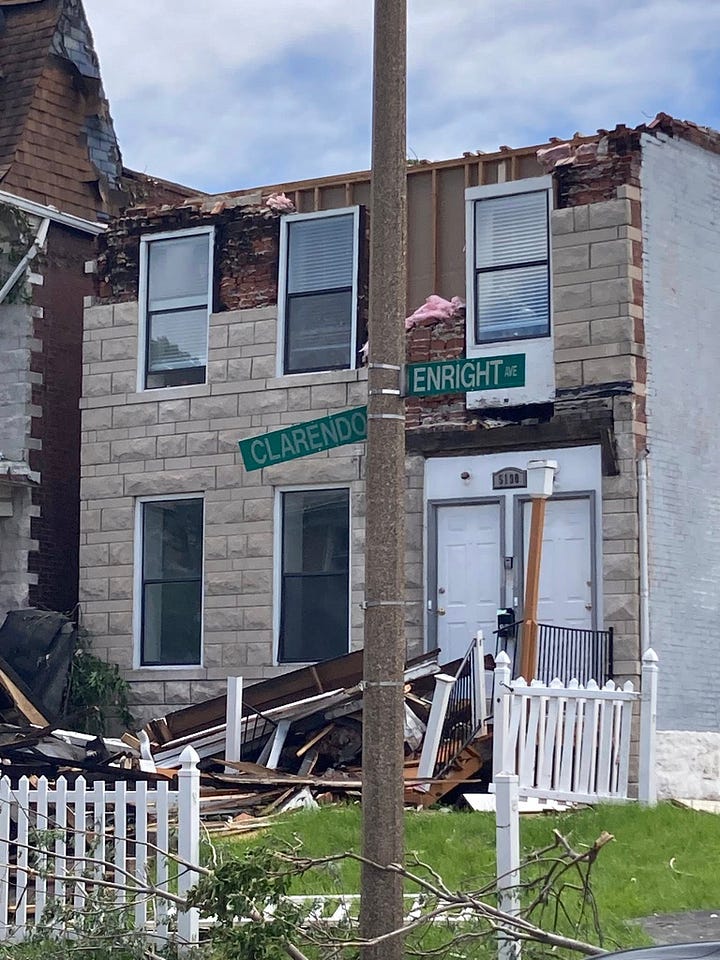
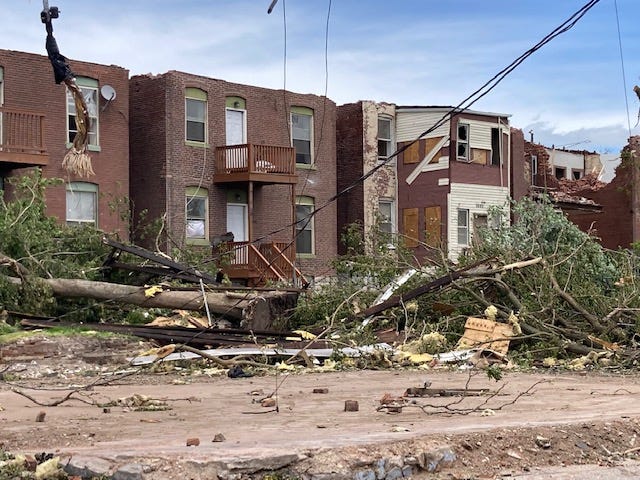
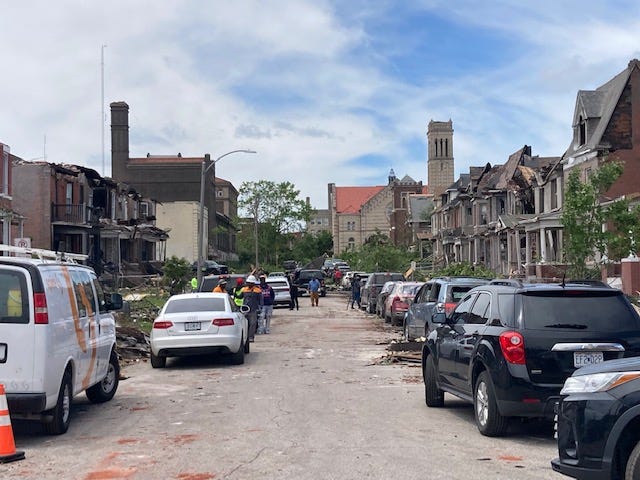
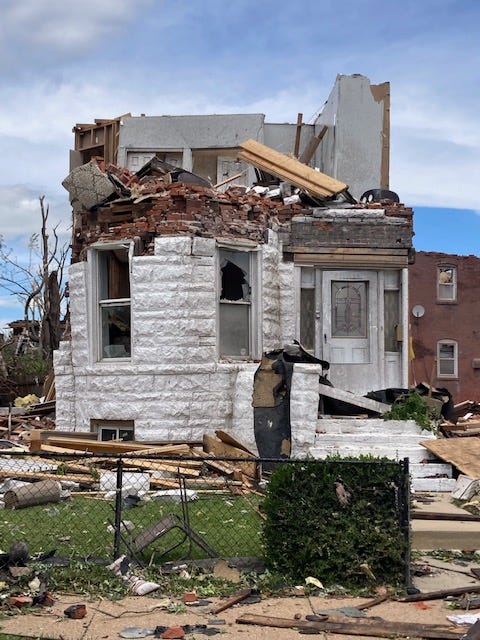
Across from May’s home sits a trap house. She told me that its inhabitants are mostly drug users, but “a few dealers” live there too. A group of residents sat on the stoop and spilled into the yard, sharing food and watching the activity on the street. At one point, a woman there appeared to be having a health crisis and an ambulance showed up, only to be shooed away upon arrival.
“That’s several times a week,” May said.
The trap house denizens have no roof after a giant tree felled in the storm crashed into it.
May is staying with her son and daughter-in-law for now. Her husband is camping out in his auto repair business, which is just across the alley from their home. He’ll do so until both structures can be made looter-proof.
Just as I arrived on the street, a white SUV pulled up near May’s car. The driver was handing out hot meals sourced from a local restaurant through the World Central Kitchen. She took the time to talk to May, and eventually gave her a hug before moving on. At one point a city animal control van pulled into the street. A pair women emerged and reunited a man whose dog, probably terrified, got loose and lost in the storm. These folks were all white. Most of the linemen working to restore electricity were also white. When they left the neighborhood, they likely had safe homes to return to.

